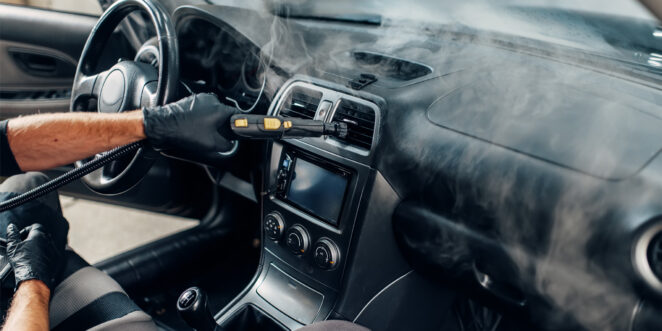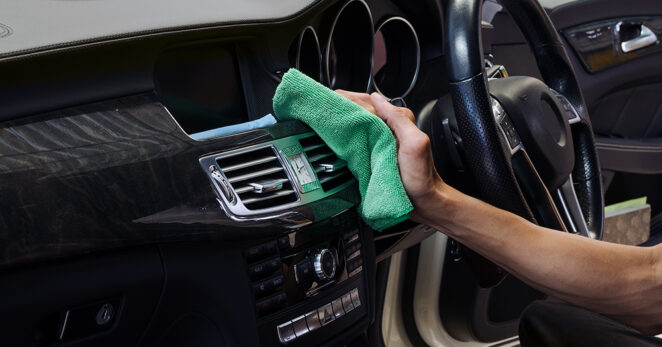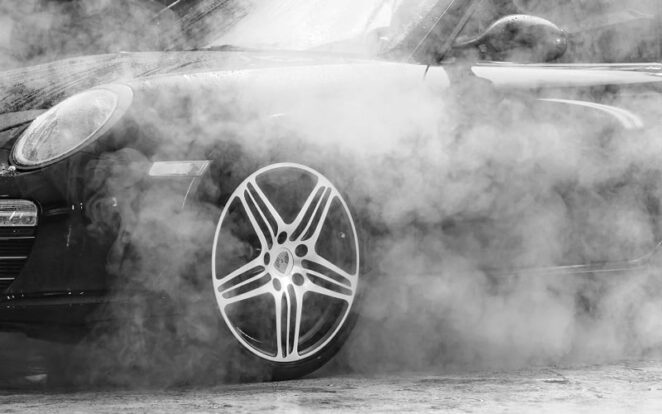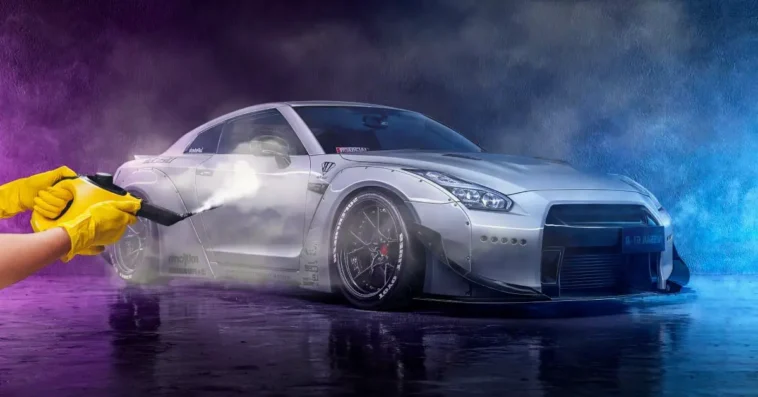Auto detailing is a meticulous process that aims to restore and enhance the appearance of a vehicle, both inside and out. Traditionally, the use of chemicals and manual scrubbing has been the go-to method for achieving a thorough clean. However, in recent years, steam cleaning has emerged as a powerful and eco-friendly alternative. This rulebook will guide you through the world of steam cleaning auto detailing, providing you with essential tips, tricks, and best practices to achieve outstanding results.
Safety Precautions and Equipment Setup
It’s crucial to prioritize safety. Always wear protective gear such as gloves and safety goggles to shield yourself from hot steam and potential chemical splatters. Additionally, ensure proper ventilation in your workspace to prevent excessive moisture buildup.
When setting up your cleaning equipment, follow the manufacturer’s instructions carefully. This typically involves filling the cleaner’s water tank, connecting the necessary attachments, and allowing the device to heat up to the recommended temperature. It’s also advisable to keep a clean towel or microfiber cloth nearby for quick cleanup.
Choosing the Right Steam Cleaner for Auto Detailing
Not all steam cleaners are created equal, so it’s essential to select the right one for auto detailing. Look for a steamer for car detailing with a high-pressure rating, as this will ensure the effective removal of dirt, grime, and stubborn stains. A unit with adjustable pressure settings is also beneficial, as it allows you to adapt the pressure to different surfaces and requirements.
In the realm of auto detailing, the art of steam cleaning holds immense promise. Its eco-friendly nature, combined with its ability to tackle stubborn stains and dirt, has made it a favored choice among car enthusiasts and professionals alike. Yet, to truly harness the power of steam cleaning, there’s a crucial preparatory step that often gets overlooked: pre-cleaning.
Imagine this scenario: you’re dealing with a vehicle’s interior or exterior surface that’s caked in mud, grime, or heavy soil buildup. While steam cleaning is formidable, it’s not a magic wand that can instantly make such messes vanish. This is where pre-cleaning comes into play, and its value cannot be overstated.
Consider the size and weight of the cleaner, as this will affect maneuverability and ease of use. Opt for a model with a long power cord and hose, enabling you to reach all areas of the vehicle comfortably. Lastly, choose a cleaner with attachments specifically designed for auto detailing, such as brushes, nozzles, and upholstery tools. Visiting an establishment like car detailing Huntsville AL will also be a good option if you don’t want to do the cleaning yourself.
Essential Cleaning Techniques for Different Surfaces

- Interior Surfaces:
- Upholstery and Carpets: Use a fabric attachment and gently steam clean the surfaces in a back-and-forth motion. Be cautious not to oversaturate the fabric.
- Leather Seats: Employ a specialized leather cleaning attachment and use gentle strokes to avoid damaging the material.
- Dashboard and Panels: Utilize a small, detailed brush attachment to access tight spaces and effectively clean textured surfaces.
- Exterior Surfaces:
- Paint: Begin by pre-washing the vehicle to remove loose dirt. Then, use a steam cleaner with a soft brush attachment to gently clean the paintwork. Ensure you maintain a safe distance from the surface to prevent any potential damage.
- Wheels: Apply steam directly to the wheels and use a brush attachment to scrub away brake dust and grime. Pay close attention to intricate areas and hard-to-reach places.
- Glass: Use a cleaner with a squeegee attachment to effortlessly remove smudges and streaks from windows and mirrors. Wipe away excess moisture with a clean microfiber cloth.
Removing Stubborn Stains and Odors
Steam cleaning is highly effective in tackling stubborn stains and odors within a vehicle. Here are some tips to address common issues:
- Stains:
- Upholstery and Carpets: Apply steam directly to the stained area, and then gently blot the stain with a clean cloth or paper towel. Repeat the process if necessary.
- Leather Seats: Use a soft brush attachment to agitate the stained area gently. Avoid excessive pressure, as it may damage the leather. Wipe away the stain with a microfiber cloth.
- Odors:
- Interior: Steam clean the affected area, focusing on spots prone to odor retention, such as floor mats and carpets. The high-temperature steam will neutralize and eliminate unpleasant odors.
- Air Vents: Direct steam into the air vents to remove trapped dust and debris, which can contribute to stale odors. Remember to adjust the pressure to prevent any damage to delicate parts.
Steam Cleaning Engine Bays and Undercarriages
Steam cleaning is not limited to the vehicle’s interior and exterior surfaces; it’s also an excellent method for cleaning engine bays and undercarriages. However, it’s crucial to take certain precautions:
- Engine Bay:
- Avoid steam cleaning electrical components or delicate sensors. Cover them securely with plastic bags or waterproof covers.
- Use a lower pressure setting to prevent water from seeping into sensitive areas.
- Be cautious around belts, hoses, and connectors to avoid damaging them.
- Undercarriage:
- Focus on removing dirt, grime, and road salt from the undercarriage to prevent corrosion.
- Utilize a steam cleaner with a strong jet nozzle or a specific undercarriage attachment for optimal results.
- After cleaning, thoroughly dry the undercarriage to prevent water accumulation and rust formation.
Maintaining and Cleaning the Equipment

To ensure the longevity and optimal performance of your steam cleaning equipment, regular maintenance is crucial. Here are some key maintenance tips:
- Clean the water tank and remove any mineral deposits regularly. Follow the manufacturer’s instructions for descaling if necessary.
- Check and clean the attachments, brushes, and nozzles to remove any debris or residue.
- Store the cleaner in a dry, well-ventilated area to prevent mold or mildew growth.
- Inspect the power cord and hose for any signs of wear or damage. Replace them promptly if needed.
Troubleshooting Common Issues and FAQs in Steam Cleaning Auto Detailing
Even with proper care, you may encounter some issues while steam cleaning. Here are a few common problems and their solutions:
- Insufficient Pressure:
- Check if the water tank is adequately filled.
- Ensure the steam cleaner has reached the recommended temperature before use.
- Clean any clogged nozzles or attachments that might be obstructing steam flow.
- Excessive Water Spitting:
- Avoid overfilling the water tank.
- Check for any loose connections or damaged seals.
- Clean the nozzles and attachments to remove any debris that might be causing a blockage.
- Lingering Odors:
- Ensure you’ve thoroughly cleaned and dried the affected areas.
- Repeat the steam cleaning process or consider using a specialized odor-eliminator product.

Conclusion
Steam cleaning is a game-changer in the world of auto detailing, offering a safe, efficient, and eco-friendly approach to achieving a pristine finish. By following the tips, tricks, and best practices outlined in this rulebook, you’ll be well-equipped to tackle any detailing task with confidence. Remember to prioritize safety, choose the right equipment, and adapt your techniques to suit different surfaces and requirements. With steam cleaning, your auto detailing ventures are bound to reach new heights of excellence.




